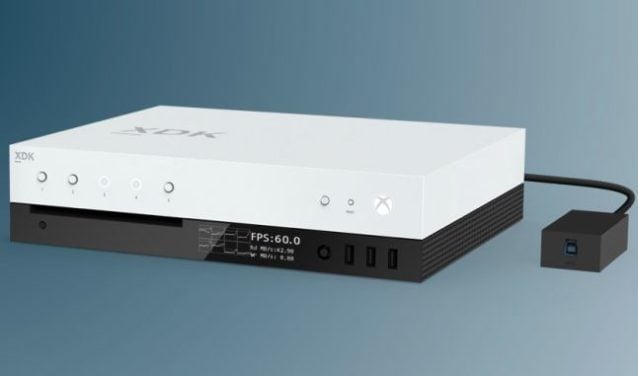
Leading up to this year’s E3 where Project Scorpio is expected to be revealed in full, Microsoft has partnered with Gamasutra to offer an in-depth look at the ways developers can take advantage of the Scorpio XDK to build their games.
Released late last year, the PlayStation 4 Pro has resulted in all post-release games being able to benefit from the additional overhead of the hardware. Earlier this year the “Boost Mode” feature made its way onto the scene allowing even unsupported titles to benefit from the hardware. From the sounds of it, Scorpio will bypass the need for players to select a similar mode altogether.
Project Scorpio’s advantage here is nothing having to be done to existing or future Xbox One titles in order for them to take advantage of the hardware powering Project Scorpio — all games will benefit automatically.
“You can just write to the original set of [Xbox One] requirements that we have today, and then we’ll do the work to make sure that it actually runs better. But [developers] don’t have to do any custom work for Scorpio,” Choudhry told Gamasutra.
“We’re just inviting people to come in and take advantage of it. In terms of requirements if they do decide to take advantage of it, we want that content to run, at minimum the same as but ideally better than it does on the original Xbox One.“
The result, then, is the original Xbox One will become the “minimum spec” developers should aim for, much in the same manner PC requirements work; the hardware is more powerful, but the associated platform remains the same.

To further accommodate developers, Project Scorpio’s XDK will sport 44 CUs rather than 40 — 6.6 teraflops of compute performance versus the 6 that will be available in the retail machine. Additionally, developers will have access to 24GB of GDDR5 RAM (double that of the retail 12GB) and a 1TB SSD (Solid State Drive) that is an addition to the consumer 1TB hard disk.
The objective here is simple: build the games with 4K in mind and tune them down to run on the Scorpio and Xbox One consoles, not the other way around. Kevin Gammill, Microsoft’s Group Program Manager for Xbox Core Platform explains further:
“At a high level, it’s much easier for a game developer to come in higher and tune down, than come in lower and tune up. Or nail it. That just rarely happens.
Our overarching design principle was to make it easy for devs to hit our goals: 4K, 4K textures, rocksteady framerates, HDR, wide color gamut, and spatial audio.”
Microsoft continues the discussion of the upcoming Xbox leading into this year’s E3 where the focus is likely to be on revealing the mid-generation console in the flesh and the titles supporting it at launch.
Keep an eye on GTPlanet for more as it becomes available.
[Source: Gamasutra]
See more articles on 4K Resolution, Project Scorpio, and Xbox One.










